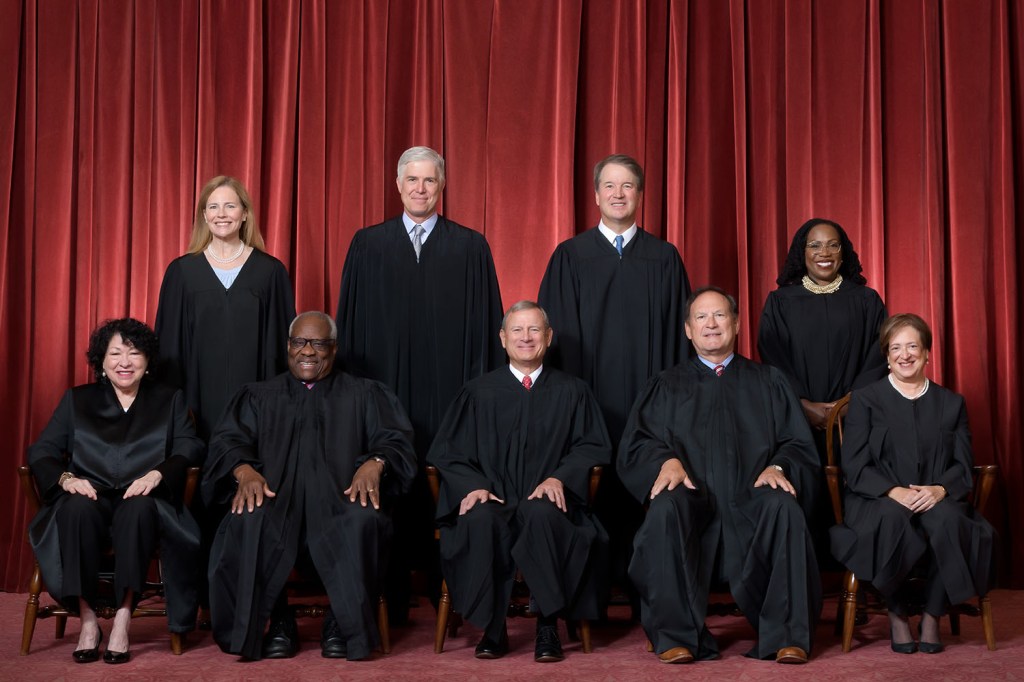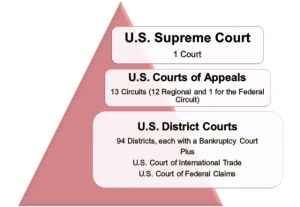“Life and liberty can be as much endangered from illegal methods used to convict those thought to be criminals as from the actual criminals themselves.”- Earl Warren, 14th Chief Justice of the United States
The United States court system is a dual system (USC, 2023). The dual court system refers to the separate federal judicial and state judicial court systems (USC, 2023). The two court systems formed in America when the United States Constitution established federal courts (USC, 2023). The founding fathers who framed the United States Constitution sought to limit the federal government power, which is the fundamental idea of why federalism was such an important concept by the framers (USC, 2023). Each of the new 13 states had already established their own state court system so this created a dual court system in America (USC, 2023). As America moved forward, the federal and state court systems matured (USC, 2023).
United States Federal Courts
Today, the structure of the federal court system has three levels (USC, 2015). The first and lowest level of the federal court systems is the United States District Courts (USC, 2023). The next second level in the federal court system is the United States Court of Appeals (USC, 2023). This third level is the highest court in the land, the United States Supreme Court (USC, 2023).
United States District Courts
There are 94 districts in the United States District Court system that structured within 12 regional circuits (USC, 2023). The U.S. District Courts are trial courts and have jurisdiction over federal criminal cases (USC, 2023). The United States District Court is where someone is charged with a federal crime appears to answer the charge/s (USC, 2023). For each of the 94 districts there is at least one federal district court judge (USC, 2023).
U.S. District Court Judges are appointed by the President of the United States, and then confirmed by the U.S. Senate (USC, 2023). It takes a majority vote in the Senate to confirm the appointment. Once sworn in a U.S. Federal Judge, it is a lifetime appointment (USC, 2023).

For federal criminal cases, the United States Attorney representing the United States as the federal prosecutor presents the evidence in the case to the grand jury (USC, 2015). The grand jury will listen to the evidence presented and decide if the evidence is sufficient to bring a “True Bill”, which means that the grand jury recommends the defendant/s stand trial for the alleged criminal offense (USC, 2023). The defendant is then indicted and must appear in front of a federal magistrate judge to determine if bail is to be set or the defendant remain in the custody of the U.S. Marshal’s office pending trial (USC, 2023).
In a federal criminal trial, the burden of proof is with the federal government to prove their criminal case (USC, 2023). The defendant is not required to prove their innocence, and the defense may decide to remain silent as the government presents their case (USC, 2023). The government must present evidence to the jury, and the jury must be convinced beyond a reasonable doubt to find the accused guilt (USC, 2023).
If the federal government does not convince the jury of guilt beyond a reasonable doubt, then the jury must find the defendant not guilty (USC, 2023). If the defendant is found not guilty at trial the federal government cannot prosecute the defendant again for the same crime (USC, 2015). Prosecuting a person for the same crime because they were found not guilty at the first trail is considered double jeopardy and not allowed in the U.S. court system (USC, 2023).
United States Court of Appeals
The function of the United State Court of Appeals is to determine if the law was applied correctly in the U.S. District Courts during trail (USC, 2023). In the federal court system, there are 13 appellate courts called circuits (USC, 2023). The United State Court of Appeals hears challenges to District Court rulings that are located within their assigned circuit (USC, 2015).
When a case comes before the United State Court of Appeals, it is not in front of a jury (USC, 2015). Three (3) federal court judges sit on a panel and listen to arguments from the U.S. Attorney’s office and the defense attorney’s (USC, 2023).
The United State Court of Appeals has 179 federal judges that hear cases (USC, 2023).
The authority of the U.S. government to create U.S. District Courts and the United State Court of Appeals is established in the United State Constitution under Article III, which states that the judicial branch of the U.S. government will comprise the Supreme Court of the United States and lower courts created by Congress (USC, 2023). Congress created the United States Court of Appeals and the United State District Courts (USC, 2023).
United States Supreme Court
Authority of the U.S. Constitution in Article III established the United States Supreme Court (USC, 2023). The U.S. Supreme Court is the highest court in the land, and the rulings are final and binding across the nation (USC, 2023).
The structure of the U.S. Supreme Court is led by the Chief Justice of the United States and 8 Associate Justices (USC, 2023). This brings the total number to 9 Justices (USC, 2023). Congress has the authority to fix the number of Associate Justices (USC, 2023). The odd number allows close decisions to have a majority ruling so there are no ties (USC, 2023).
U.S. Supreme Court Justices are nominated by the President of the United States and confirmed by the Senate (USC, 2023). When a U.S. Supreme Court Justices takes the oath of office, it is a lifetime appointment to the bench (USC, 2023).

Reference
United States Courts (USC). (2023). About the federal courts.
http://www.uscourts.gov/about-federal-courts/court-role-and-structure
About the Author
Mark Bond has worked in law enforcement and has been a firearms instructor for more than 33 years. His law enforcement experience includes the military, local, state, and federal levels as a police officer and criminal investigator. Mark obtained a BS and MS in criminal justice, and M.Ed in educational leadership with Summa Cum Laude honors. As a lifelong learner, Mark has a doctoral degree in education (EdD) with a concentration in college teaching and learning. Mark is currently an associate professor of human justice studies.


